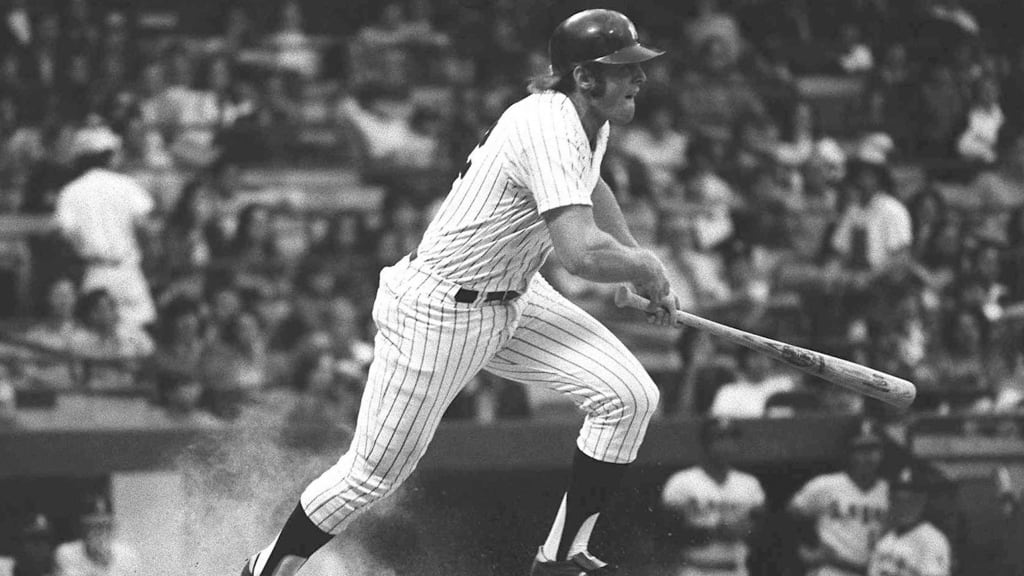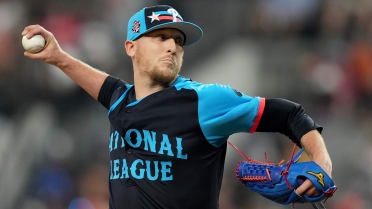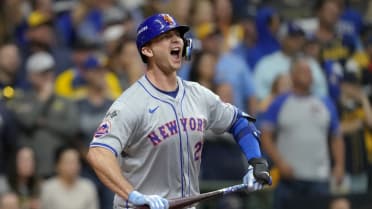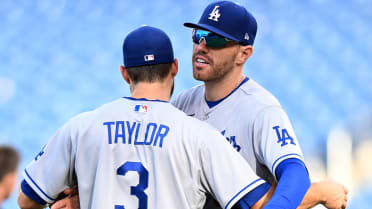First designated hitter ready to see it in NL

NEW YORK -- When the regular season starts Thursday, Major League Baseball will have a universal designated hitter for the first time since the position was created for American League teams in 1973.
Major League Baseball added the DH for the National League in this 60-game 2020 season, and the first DH in big league history is all for it. Ron Blomberg became the first DH on April 6, 1973, drawing a walk from Luis Tiant in the Yankees' 15-5 loss to the Red Sox. It didn't end there.
Blomberg batted .329 with 12 home runs and 57 RBIs that season, primarily as the DH. Of the 222 games he played in his career, 180 were as a DH, mostly with the Yankees. He would spend the rest of the time as a first baseman, finishing with a .293 career average and a .360 on-base percentage.
"[The National League] should have done this a long time ago to be honest with you," said Blomberg, who is now 71 years old. "Now it has taken 47 years for the National League to be pushed. … [The DH] became a great rule. When I first started it in '73, I never thought it would exist more than a year."
Originally agreed to as a three-year experiment, the DH is now a fixture in the AL -- and who knows what the future holds for the DH in the NL? While Blomberg believes it is "great for the game," he bemoans the changes that analytics and power have brought to baseball.
"Now, I tell people, 'I screwed up the game of baseball and I changed the whole game up.' … The pitchers should pitch," said Blomberg. "If you look at baseball now, there's no strategy in the game of baseball. There's no first and third anymore, there's no running anymore. It's, see how many runs you can score, see how many home runs you are going to hit. It's a home run, strikeout game."
Little did Blomberg know that he would be the first DH in 1973. In fact, there was a possibility he wouldn't play the first game of the regular season against the Red Sox. Blomberg didn't play the final few games of Spring Training because of a hamstring injury. It wasn't until he was on the team charter to Boston that he was informed by his manager, Ralph Houk, and coaches Elston Howard and Dick Howser, that he was going to be the DH on Opening Day.
Blomberg didn't know what the job of a DH entailed. He had spent all of camp playing first base. Houk told him to just hit and come back on the bench. It was 55 degrees that April day and Blomberg went 1-for-3 with a walk in the Yankees' loss to the Red Sox. It took a while for him to get accustom to the DH role. He was in the dugout after the first inning ended. But the third inning was a different story.
After Graig Nettles homered with two outs in the third inning, Blomberg followed and reached base on an infield single. After Thurman Munson grounded out for the final out of the inning, Blomberg stayed on the field, expecting to play first base. But first-base coach Howard told him to go back into the dugout with him. It was cold in the dugout, so he went into the clubhouse where he could get warm.
After the game, Blomberg was surrounded by reporters asking him about being the first DH. Then, according to Blomberg, Yankees public relations director Marty Appel took his bat for the Baseball Hall of Fame to display in Cooperstown, N.Y. Blomberg was not happy, feeling he had a lot of hits coming in that bat. Plus, he had a limited number of bats. Today, he is proud that the bat is on display in Cooperstown.
When Blomberg was in the lineup back in the 1970s, he didn't look at computers or take batting practice between innings. As he put it, he was a hitter.
"I put a bat in my hand. I'm going to watch a pitcher throw. I'm going to understand what he is going to throw during a certain time of the order, and I'm going to see, swing and hit," Blomberg said. "The game is totally different. It's computerized. It's all analytical. I had Elston Howard as my hitting coach. If you are 0-for-10, you say, 'Ellie, what did I do wrong?' He would say, 'Just see the ball and hit it.' And that's all we did."
Bill Ladson has been a reporter for MLB.com since 2002. He covered the Nationals/Expos from 2002-2016.




